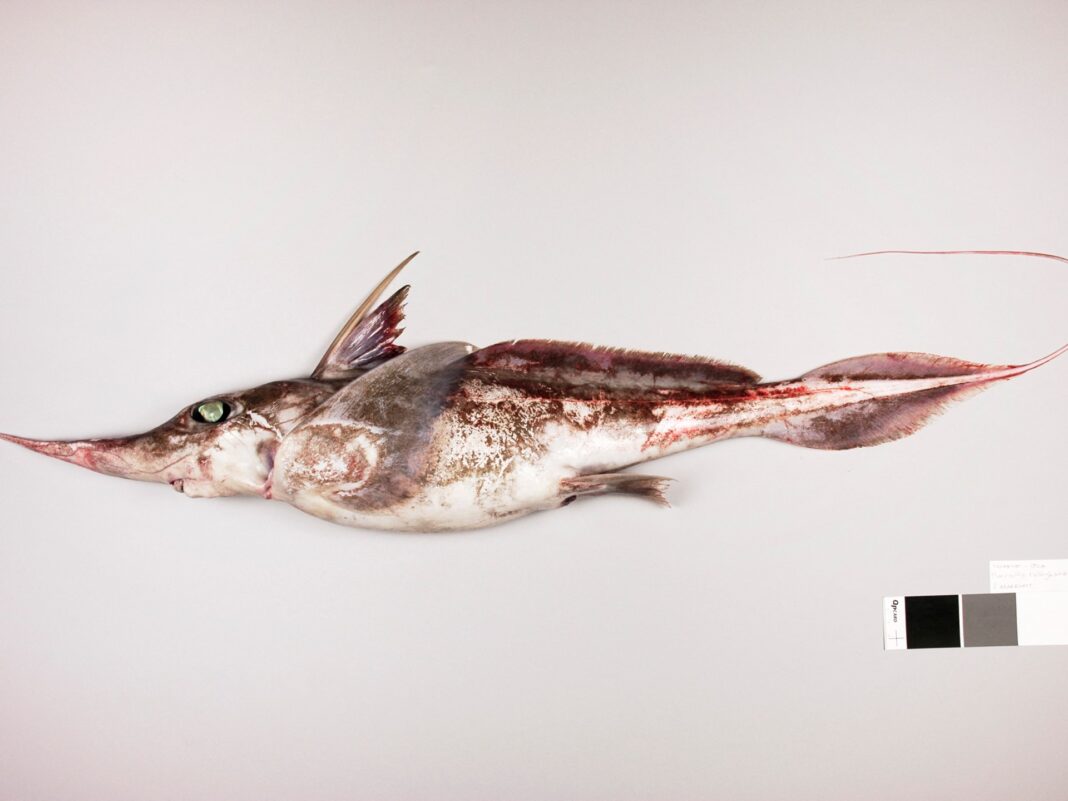The fish with beak-like mouth, now named Harriotta avia, prowls exclusively in deep waters of Australia and New Zealand.
Scientists in New Zealand have discovered a new species of “ghost shark”.
The Wellington-based National Institute of Water and Atmospheric Research (NIWA) said on Tuesday that the Australasian Narrow-nosed spookfish lives exclusively in the deep waters around Australia and New Zealand.
The fish, which prowls the ocean floor hunting prey more than 2.6km (1.6 miles) down, has been named after the grandmother of one of the research team.
Also known as “ghost sharks” or “chimaeras”, spookfish are related to sharks and rays but are part of a group of fish whose skeletons are entirely made of cartilage. Other names for the mysterious animals include ratfish, rabbitfish and elephant fish.
Ghost sharks have haunting black eyes and smooth, light brown, scale-free skin.
They feed off crustaceans at depths of up to 2,600 metres (8,530 feet) using their distinctive beak-like mouth.
“Ghost sharks like this one are largely confined to the ocean floor,” said research scientist Brit Finucci.
The specimens were discovered during research in the Chatham Rise, an area of the Pacific which stretches about 1,000km (621 miles) east of New Zealand’s South Island.
‘Grandmas and grandpas of fish’
Finucci has given the new species its scientific name “Harriotta avia” in memory of her grandmother.
“Avia means grandmother in Latin. I wanted to give this nod to her because she proudly supported me through my career as a scientist. Chimaeras are also rather ancient relatives – the grandmas and grandpas – of fish and I thought the name was well suited,” she said.
“Their habitat makes them hard to study and monitor, meaning we don’t know a lot about their biology or threat status, but it makes discoveries like this even more exciting.”
The spookfish was previously thought to be part of a single globally distributed species until scientists discovered it is genetically and morphologically different from its cousins.
“Harriotta avia is unique due to its elongated, narrow and depressed snout; long, slender trunk; large eyes; and very long, broad pectoral fins. It is a lovely chocolate brown colour,” Finucci said.







